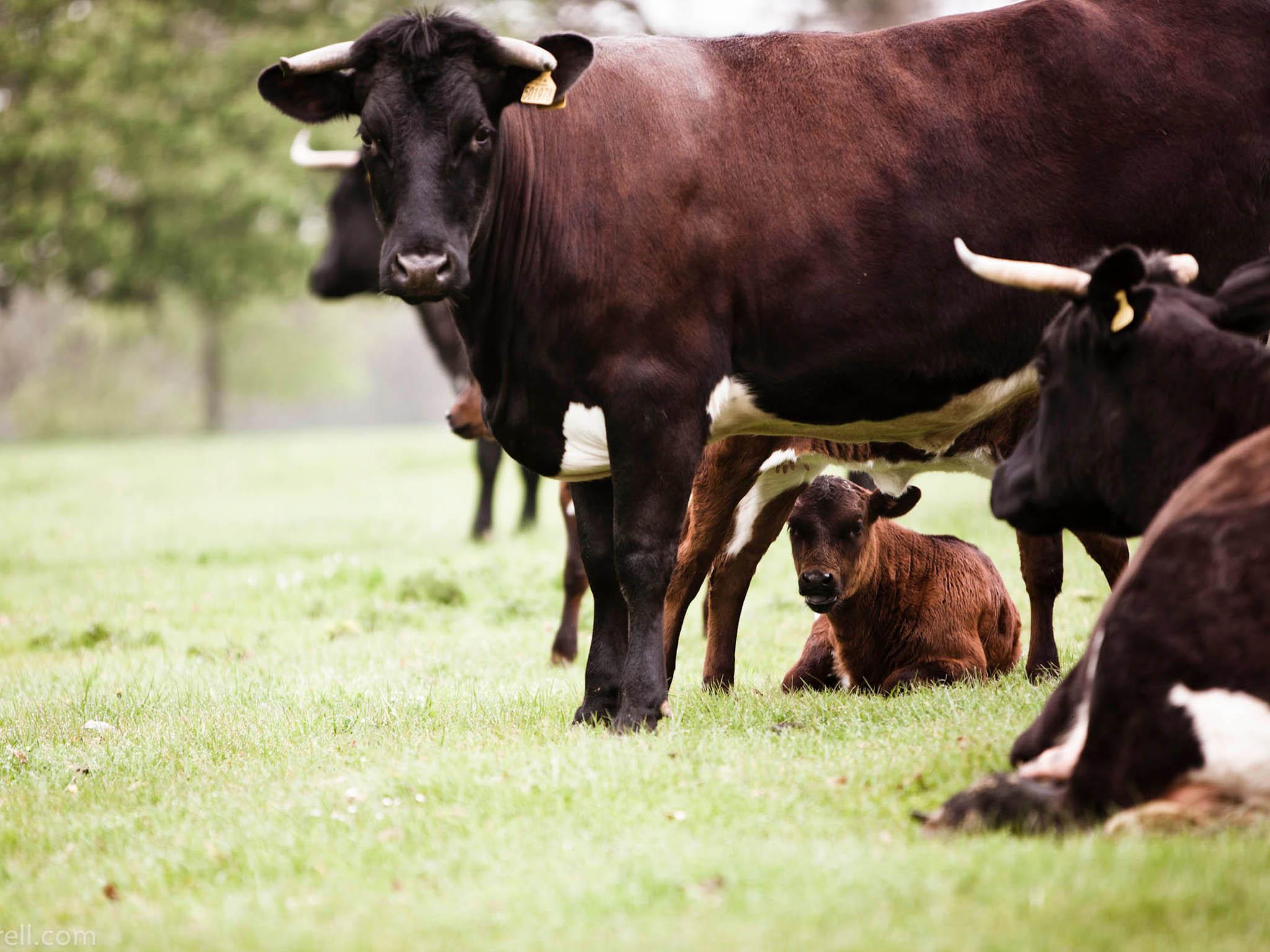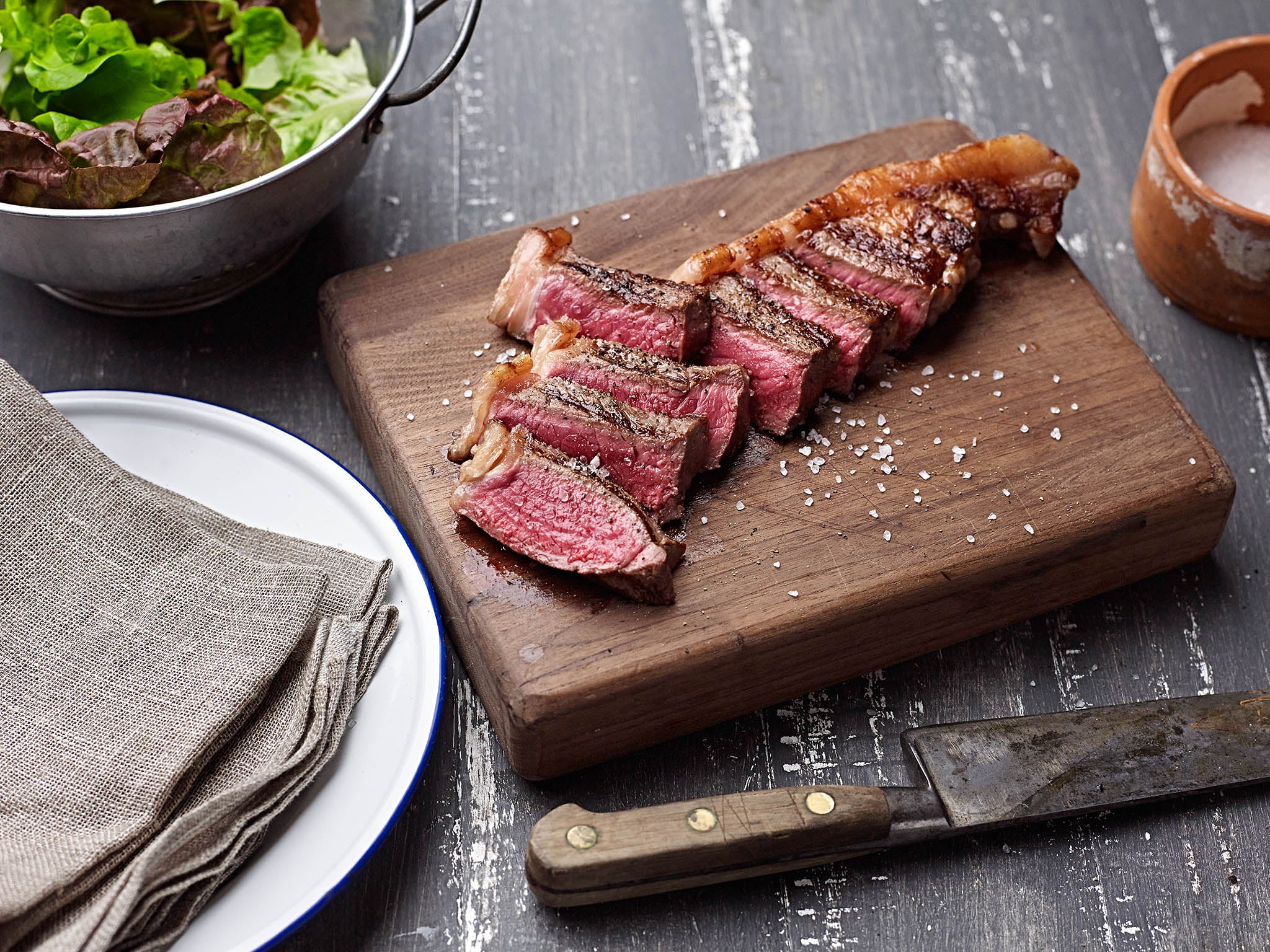Why the most ethically farmed cows produce the tastiest meat
In the third instalment of our investigation into meat production, Lizzie Rivera questions how humane a cow’s journey to slaughter can truly be

Your support helps us to tell the story
From reproductive rights to climate change to Big Tech, The Independent is on the ground when the story is developing. Whether it's investigating the financials of Elon Musk's pro-Trump PAC or producing our latest documentary, 'The A Word', which shines a light on the American women fighting for reproductive rights, we know how important it is to parse out the facts from the messaging.
At such a critical moment in US history, we need reporters on the ground. Your donation allows us to keep sending journalists to speak to both sides of the story.
The Independent is trusted by Americans across the entire political spectrum. And unlike many other quality news outlets, we choose not to lock Americans out of our reporting and analysis with paywalls. We believe quality journalism should be available to everyone, paid for by those who can afford it.
Your support makes all the difference.As the chlorinated chicken scandal that has hit the headlines over the past week shows, the reality of farming today is far from the free-range, green-pasture idyll many might imagine.
But this is not just a problem with chickens from the US. Consumer demand for more meat at cheaper cost, fuelled by supermarket supply, means factory-style farms are blighting beautiful landscapes from Cornwall to Scotland, as recently mapped by non-profit Compassion in World Farming.
“After the Second World War families spent something like 75 per cent of their income on food, now it’s 8 per cent,” says Richard Smith, manager of Daylesford, the organic farm in Gloucestershire. “Farmers have been forced into taking their business into levels of efficiencies that have never been seen before.”
In terms of cattle-farming, this has widely led to two distinct breeds of cows being created – dairy and beef.
Beef farming
Following BSE (mad cow’s disease) reaching its peak in the 1990s most beef cattle in the UK now have to be slaughtered before they are 30-months old, otherwise an additional licence and checks are required to make sure the beef isn’t contaminated.
This means there can be a race to grow them as fat as possible before slaughter, which leads to cows being kept inside and “finished” on grains.
In intensive farming systems these are similar to the US-style feedlots where cows are kept in confined conditions and fed high-protein diets so they put on weight as quickly as possible.
This causes obvious distress to the cows who value access to pasture as much as fresh feed, according to a recent study which used weighted gates to prove a cow will put as much effort into getting outside as it will to get to food.
What supermarket labels tell you about animal welfare
‘Organic’: one of the highest animal welfare labels, especially if Soil Association certified
‘Pasture-fed for life’: also very high standards, these cows are free-range and haven’t been fattened up on grains
‘Dry aged’: this doesn’t tell you much about welfare, but is an encouraging sign as the producer was willing to lose weight (and therefore money) to intensify flavour. Beware of ‘aged’ meat labels - which can just mean it’s been sitting in its vacuum-packed bag since slaughter
British / Irish / West Country etc: again this doesn’t tell you much, but British beef cattle husbandry generally better than abroad
Hereford / Aberdeen Angus/ Wagyu etc: well-known breeds, but that doesn’t guarantee quality. Animal husbandry is the most important thing to find out about.
Name of farm on packaging: again, an encouraging sign but not a guarantee. It provides the information you need to find out more.
These systems also produce lower quality meat, as Mark Schatzker, author of Steak: One Man’s Search for the World’s Tastiest Piece of Beef explains: “When it comes to steak, we often say fat is flavour, but the truth is, the flavours that make a steak so delicious are dissolved in the fat. So if you feed cattle a bland, high-grain diet (think endless amounts of porridge) you can get ultra-marbled beef that is so revered. The problem is, it tastes like a glass of tap water.”
Going against the grain
Any farmer, chef, or food-lover will testify that the higher standard of farming, the better-tasting the meat. A higher-welfare cow has meat that’s slightly firmer. It has a substantial fat covering and good marbling which is a creamier colour.
“Britain is the greatest farming nation in the world as far as I’m concerned because our landscape is so diverse and farmers have developed breeds of livestock that perform well in their particular area,” says Daylesford’s Smith, a champion of sustainable farming.
Pasture-fed cows are also healthier as they have evolved naturally to eat forage, not forced onto grains. Their meat is also generally higher in vitamin E which provides protection – against toxins and neurological diseases – and beta carotene, which is good for the immune system.
Peter Hannan, founder of Northern Ireland’s Hannan Meats – which supplies Fortnum & Mason and the Hix restaurants – works with a co-operative of farmers who breed slower-growing, native breeds raised on grass rather than grains.
“Producing lovely beef and producing wonderful stock on a farm are about the same thing – it’s all about attention to detail because the culmination of all those little things really do change the picture,” he says. This includes making sure all the cattle on the Glenarm estate have access to a certain clover that they’ve discovered gives the meat an extra sweetness.
“It’s not about forcing something to be ready. You’re not in control on timing – nature is. It’s not a competitor and the system works very well.”

One thing Hannan can control is the dry-aging process. Hanging tenderises the meat and as it matures and dries out the flavour intensifies. Typically meat is hung anywhere from 14-28 days. Supermarkets can demand the hanging process is a lot quicker, chefs can ask for it be hung a lot longer.
Hannan’s beef is matured in high-tech Himalayan salt chambers, which allows them to dry-age their beef up to 100 days, thus “taking a wonderful raw material and making it as good as it can be.”
Artisanal butchery
Nature also works in tune with higher animal welfare when it comes to the slaughter. Last year, as part of research for my ethical lifestyle website Bicbim, I visited an abattoir to see for myself if I felt killing an animal could ever be considered humane.
Cows are typically rendered unconscious by electrical stunning or captive bolt, which was the method I witnessed. It was brutal, but over with quickly and – what seemed to me – caused minimal stress to the animal.
This is imperative for quality, because if an animal is stressed during the slaughter process, the meat will cut dark and look unattractive. Plus it will have a metallic taste due to the adrenalin running through the cow at the time of death.
Questions to ask your butcher for quality assurance
What farm is the meat from and have they personally visited?
Can they tell you the story of the animal, where it was born, how it was reared and how it was slaughtered?
What certification / assurances does it come with?
Do they ever buy a whole carcass and butcher it themselves? (A good sign of knowledge and quality)
Can they recommend a different cut, and how best to cook to it? (Indicates they care about the end product)
This is one of the rare examples where animal welfare ties up to economics. As Hannan says: “If you destroy a carcass at an average of £1,000 a pop and you do that five times a day, that’s your profit gone. It’s in everyone’s interest [to make sure the cow has a good end].”
Yet, with a market dominated by large supermarkets, smaller abattoirs are being shut down at an alarming rate.
“About 30 years ago we probably had five abattoirs within a 15 mile-radius,” says Jo Budden who runs organic farm Higher Hacknell with her husband Tim. “But we’re still fortunate that we have one within an hour’s drive, while many animals have to travel hundreds of miles.”
The longer journeys are incredibly stressful for the animals. It also means Britain is losing the skills of artisanal butchery because meat is systematically processed in large plants. Good butchery drives demand for top husbandry because butchers understand quality and can make the most of the carcass.
The Buddens sell their meat directly to the consumer via their online shop at higherhacknell.co.uk. “It means customers can order any cut, or ask for the fat to be left on or taken off. I, like a butcher, can then give our customers what they want,” says Jo. “People want to derive pride from their jobs and not be at the end of an industrial process.”
Boondocks London
This is the only restaurant in the UK serving (delicious and decadent) organic, stunned halal burgers. Chef Bea Vo’s animal welfare and religious needs were so particular she had to resort to buying a cow to ensure it could be raised and slaughtered in the most humane way possible.
feedyoursoul.co.uk/boondocks
Sustainable farming?
The claim that farming animals is responsible for a third of the world’s greenhouse gases – more than all transport put together – is a commonly quoted stat that many farmers disagree with.
It may be true of industrial farming, where animals raised indoors take up less land but huge swathes of jungle and rainforest across the world are being razed to grow the crops to feed them high-protein diets.
However, it doesn’t take into account the more sustainable grass-based systems, where grazing animals at pasture can help offset CO2 emissions by sequestering carbon in the soil. Here, smaller fields of four-five acres are separated by hedges and trees in which wildlife thrives and that help to protect the soil from erosion in extreme weather conditions.
The Buddens believe in organic certification because they can be independently verified. However, not all non-organic systems are intensive, such as Hannan’s Meat.
With such a broad spectrum of farming there’s an overwhelming number of choices and food labels to decipher when searching for high-quality, high-welfare meat. Personally, I take it down to the single animal that is providing the milk in my tea or the meat on my plate and ask myself if I am confident that I am comfortable with the life it has lived.
If I’m not, I abstain. If I am, you’ll find the brand on my website Bicbim.
As Hannan says: “Cheap meat is not something any of us should aspire to have. Every time we eat a piece of meat something is being sacrificed. It should be a luxury, not an everyday commodity.”
Next month: Revealed – the truth about dairy farming
Join our commenting forum
Join thought-provoking conversations, follow other Independent readers and see their replies
Comments